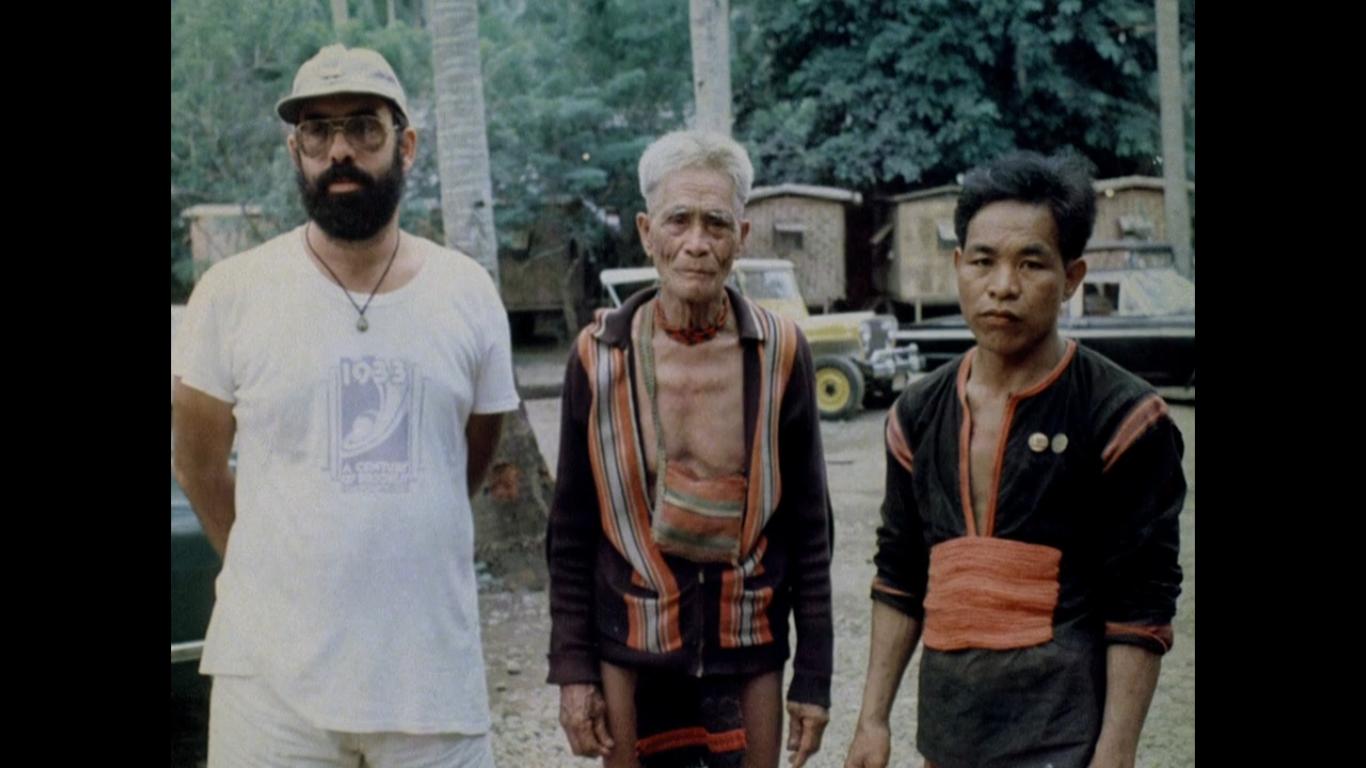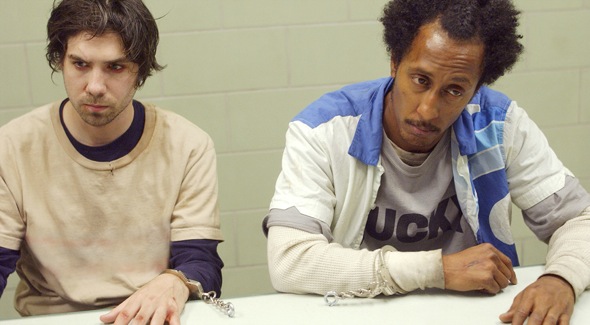Documentaries about film-making are one of my favorite kinds, and I have George Lucas to
thank for that. “Star Wars” was a
seminal cinematic event from my childhood, and I was mesmerized when the first “making of” special that aired
on television. My
passion for film documentaries was ignited and still burns to this day. As the process of making films is often as
epic as the films themselves, I anticipated each succeeding entry with just as much excitement.
The five films profiled
below are all excellent, in-depth examinations of the travails of filmmaking. It’s not an easy business,
and anyone who’s ever picked up a Super 8 camera knows that you can never fully
anticipate the amount of work involved until the final cut flickers across the
screen. The journey may begin simply,
but finding the path to the end may cost more than money. However, if the final result is a film like
the ones examined below, is the price really too high?
Directors often have periods
of suffering and doubt during the course of their careers. Some endure psychological torture on the
level of a Lovecraftian protagonist.
However, it’s rare for such experiences to be filmed, and even more
unlikely for that material to eventually comprise a theatrical release of such
power that the documentary rivals the original film in its cathartic intensity.
I can think of no better cinematic example of art imitating life than “Hearts
of Darkness.”

Francis Ford Coppola’s wife
Eleanor shot a lot of home movies during the making of “Apocalypse Now.” She also secretly recorded her husbands’
conversations with herself as well as his many arguments over the phone with
nervous studio execs. What emerged years
later in the editing room is likely the greatest film about filmmaking. “Hearts of Darkness” chronicles Coppola’s
descent in the green hell of the Philippines, and the emotional and psychological torment of the struggle to complete “Apocalypse Now” suffuses every frame.
The combination of
heat & humidity, cost overruns, script rewrites and borderline insane
actors was dangerously volatile, and the production constantly teetered on the
verge of collapse. Only the sheer force
of Coppola’s will kept things moving forward.
“Apocalypse Now” is a remarkable examination of the futility of war, and
alongside “Hearts of Darkness” both films are testaments to the ability of the
human spirit to survive in the midst of absolute chaos.
James Cameron’s passion for
telling epic stories is rivaled only by his absolute commitment to making them
as best he can. Cameron’s vision for
“The Abyss” was daunting to say the least, and his insistence on shooting as
much of the film with real equipment, submersibles and sets resulted in one of
the most famously arduous productions in Hollywood history.
The largest underwater set
was actually constructed inside an unfinished nuclear reactor chamber, and it is no
small irony that the long grueling hours everyone spent submerged created
almost as dangerous a situation as a radioactive core on the brink of
meltdown. The emotional challenges were
already enough to exhaust even the most seasoned professional. Combine that with the physical drudgery of
suiting up in real deep sea diving gear and going through descent and
decompression on a daily basis and you’ve got a harrowing experience that few
could face, much less see through to the end.

Cameron’s unswerving focus on finishing the film despite all the drastic setbacks is tremendously admirable, and
it resulted in one of his best films (Director’s Cut only!). As for the actors, you can hear the pride in
their voices when they recount their stories.
All of them passed through a major crisis in their lives and emerged
with a more profound sense of self. They survived their descent into “The Abyss.”
Director Ridley Scott’s early
film career contains many accomplishments, but “Blade Runner” is one of the
most significant. This movie is regarded
by many as one of the greatest science fiction films of all time, and it
certainly set a benchmark that has yet to be approached, much less
surpassed. Scott’s steely determination
to realize this dark vision of a possible future was by turns a source of
inspiration and exasperation for all involved.
“Dangerous Days” is one of
the most thorough documentaries of its kind, and it’s blessed by having a wealth
of archival material to use. The
documentary is a feast of behind the scenes photos and video footage of
conceptual paintings, sketches, set construction and props created to realize
the dystopian world of Los
Angeles in
2019! The cast and crew were subjected
to many long night shoots, often under the icy spray of rain machines. Sets were constantly being built, detailed
and repaired, and there were repeated delays.
The anecdotes and stories
from the director, actors, writers and prominent production
designers contrast a warm, human center against
the cold, amoral world of “Blade Runner.”
Though the theatrical feature is a decidedly bleak rumination on the
value of human life, it is not without hope, and “Dangerous Days” further shows us that
these somber stories are necessary, especially when they demonstrate that if we
can work together through dark times that, brighter, less dangerous days will come.
The backstreets and alleys of
Hollywood are littered with human failures, but Tinseltown is
not the only city where would-be stars have fallen to Earth. Every town in every state has an “I coulda
been somebody” story, but it would be a rare thing for the teller of the tale to
confess that it was their own hubris that brought them down. Troy Duffy will never admit it, but that’s
exactly what he did.
Boston native and bartender Troy Duffy had an extraordinary
stroke of luck. He wrote a script about two gun-slinging Irish brothers who take on the mob called “The Boondock Saints” and the Weinstein brothers of Miramax wanted a piece of the action. What is more incredible is that the Weinsteins agreed to let
Duffy direct the film and for his band of actual brothers to compose the
soundtrack! It was the most generous and
exclusive deal ever offered to an unknown, and that’s when the swelling started.

Troy Duffy’s ego soon rivaled
the Rock of Gibraltar in its mammoth size and absolute unwillingness to budge
for anyone or anything. Duffy’s
delusions grew to such mythical proportions that he saw no harm in taking the
entire monetary advance from the Weinsteins and blowing it all on a bender in
Vegas! Despite this, Duffy was able to
finish the movie on a drastically reduced budget. The film did not fare well in theaters, and Duffy
became a pariah. “Overnight” has two
major lessons to impart: don’t let money and fame go to your head, and don’t
forget who your friends are.

In case you were wondering, there was eventually a sequel! “The Boondock Saints” developed a strong cult
following on home video, and ten years later Duffy was approached to write and
direct. And the exact same scenario
played out again. He blew his entire advance and again had to finish the second on a much smaller budget. After a decade to reflect on
his wrongs, Duffy had learned nothing, and apparently, neither had the
studios! Once bitten, twice dumb?

I had not seen this famous
film until very recently, and the experience was quite surprising. It took Werner Herzog more than four years to make “Fitzcarraldo” because of logistical problems, major cast changes and
unpredictable weather. Shooting on
location in the Peruvian jungle was threatened by an impending conflict with
the neighboring nation of Ecuador. “My
Best Fiend” showed what a histrionic madman actor Klaus Kinski could be become. With all this, I expected “Burden of Dreams”
to be a maelstrom of frustration, rage and suffering.
Instead, this documentary
reveals a serene atmosphere of stoicism much like its main character. While there are heated discussions, setbacks
and lots of starting over from scratch, Werner Herzog maintains a calm that
would earn the admiration of Buddhist monks everywhere. This is partly because Les Blank, who made the
documentary, chose not to include certain fiery scenes. Kinski’s explosive tirades against Herzog
were so volcanic that the Peruvian natives approached Herzog and offered to
kill Kinski for him! Yet, none of this
is in the film.
What emerges is a meditation
on the value of patience and determination.
Narration provides some details of the onscreen action, but there also
many shots of the river or the jungle and the creatures that live there which
have little to do with the film production.
The visual parallels are delightful.
Like ants, the tiny humans scurry through the mud, relentless in their
desire to get the ship over the mountain.
When the goal is finally achieved, it is not a monumental moment. Rather the viewer comes to realize that the
time and effort it took to reach the end of this long journey is the more
valuable part.











































